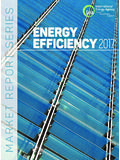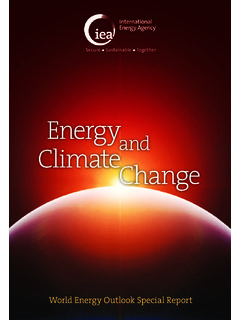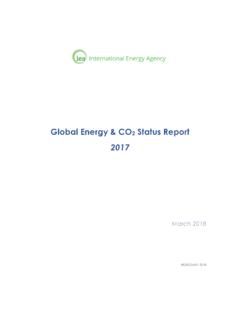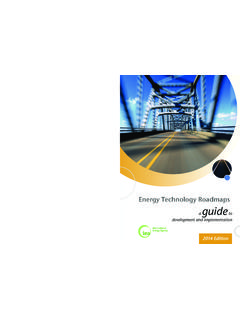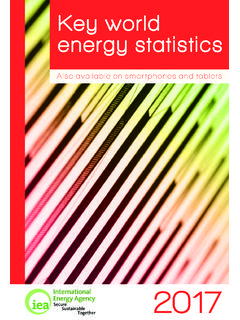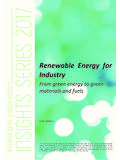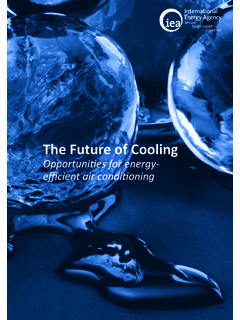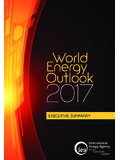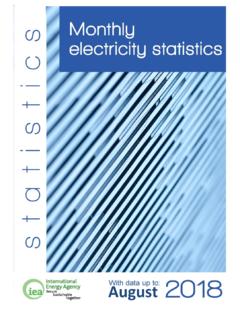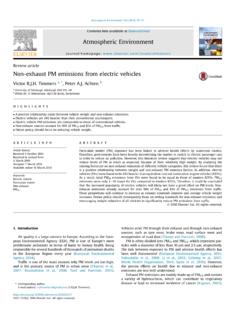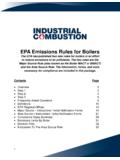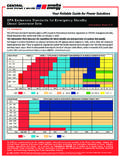Transcription of CO2 Emissions from Fuel Combustion 2017 - …
1 CO2 Emissions from fuel combustionstatistics2017 HIGHLIGHTSCO2 Emissions from fuel combustion2017 HIGHLIGHTSINTERNATIONAL ENERGY AGENCYThe International Energy Agency (IEA), an autonomous agency, was established in November 1974. Its primary mandate was and is two-fold: to promote energy security amongst its member countries through collective response to physical disruptions in oil supply, and provide authoritative research and analysis on ways to ensure reliable, affordable and clean energy for its 29 member countries and beyond. The IEA carries out a comprehensive programme of energy co-operation among its member countries, each of which is obliged to hold oil stocks equivalent to 90 days of its net imports.
2 The Agency s aims include the following objectives: n Secure member countries access to reliable and ample supplies of all forms of energy; in particular, through maintaining effective emergency response capabilities in case of oil supply disruptions. n Promote sustainable energy policies that spur economic growth and environmental protection in a global context particularly in terms of reducing greenhouse-gas Emissions that contribute to climate change. n Improve transparency of international markets through collection and analysis of energy data. n Support global collaboration on energy technology to secure future energy supplies and mitigate their environmental impact, including through improved energy efficiency and development and deployment of low-carbon Find solutions to global energy challenges through engagement and dialogue with non-member countries, industry, international organisations and other member countries.
3 Australia Austria Belgium CanadaCzech RepublicDenmarkEstoniaFinlandFranceGerma nyGreeceHungaryIreland ItalyJapanKoreaLuxembourgNetherlandsNew Zealand NorwayPolandPortugalSlovak RepublicSpainSwedenSwitzerlandTurkeyUnit ed KingdomUnited StatesThe European Commission also participates in the work of the note that this publication is subject to specific restrictions that limit its use and distribution. The terms and conditions are available online at OECD/IEA, 2017 International Energy Agency Website: Emissions FROM fuel Combustion Highlights (2017 edition) - 3 INTERNATIONAL ENERGY AGENCY FOREWORD The energy sector is in a state of transition.
4 In recent years, we have seen a fundamental shift in the way govern-ments around the world approach energy-related environmental issues, with policy considerations increasingly driven by concerns about environmental sustainability, economic competitiveness, energy security, air pollution and climate change. The goal is to create a clean, sustainable, affordable and accessible global energy system. As such, climate change remains a key focus of IEA work and a central aspect of this work is providing complete, accurate and timely data. The IEA works with the IEA family of countries and beyond to improve reporting of energy data, ultimately resulting in more accurate estimations of CO2 Emissions .
5 This is important, because energy accounts for approximately two-thirds of total greenhouse gas Emissions and around 80% of CO2. Any effort to reduce Emissions and mitigate climate change must include the energy sector. Based on official energy data and IPCC methodologies, this publication represents the most comprehensive set of estimates of CO2 Emissions from fuel Combustion across the globe and all sectors of the economy. In the lead-up to the UN climate negotiations at COP23 in Bonn, Germany, which follow the successful outcomes of the Paris and Marrakech meetings, this latest information on the level and growth of CO2 Emissions from fuel Combustion , their source and geographic distribution will be vital for the participants and decision makers in the UNFCCC process.
6 This edition includes data from 1971 to 2015 for more than 150 countries and regions worldwide by sector and by fuel as well as a number of CO2-related indicators. It is our hope that this breakdown will assist the reader in better understanding the evolution of Emissions worldwide. The IEA will continue to provide accurate data to inform the debate and ultimately promote evidence-based policy recommendations on the complex, but critically important, relationship between energy and climate change. Dr. Fatih Birol Executive Director OECD/IEA, 20174 - CO Emissions FROM fuel Combustion Highlights (2017 edition) INTERNATIONAL ENERGY AGENCY 2017 Highlights This excerpt from the CO2 Emissions from fuel Combustion 2017 publication contains an extensive selection of CO2 Emissions data for over 150 countries and regions, including detailed graphs and tables for the world and regional aggregates, and an analysis of recent trends.
7 Emissions are based on the IEA World energy balances 2017 and on the 2006 IPCC Guidelines for greenhouse gas inventories. For more comprehensive data by country and sector, please refer to the IEA data service portal ( ); for the full publication please refer to the IEA Bookshop ( ). Inquiries should be addressed to Please note that all IEA data is subject to the following Terms and Conditions found on the IEA s website: What s new? New focus on Association countries and on geographic regions In the 2017 edition, six new regional aggregates are added as a response to user requests.
8 Firstly, the IEA and Accession/Association countries aggregate is added to show the wider connections the IEA has beyond members as part of the continuous development of the IEA s work; this shows member countries, Accession countries and Association countries as a whole. The five regional geographic aggregates are also included: Africa, Americas, Asia, Europe and Oceania, which are based on country aggregations in line with the UN s geographic regions. Note that these aggregates apart from Africa - have different coverage from those historically presented in this publication ( Armenia is included in Non-OECD Europe and Eurasia and in Asia at the same time).
9 For the list of countries in each aggregation, please refer to the section Geographical coverage . New OECD member: Latvia Latvia became an OECD member in July 2016. Accordingly, Latvia appears in the list of OECD members and is included in the zone aggregates for data from 1990, starting with the 2017 edition. Prior to 1990, data for Latvia are included in Former Soviet Union. OECD/IEA, 2017CO Emissions FROM fuel Combustion Highlights (2017 edition) - 5 INTERNATIONAL ENERGY AGENCY TABLE OF CONTENTS 1. CO2 Emissions OVERVIEW ..9 The growing importance of energy related Emissions .
10 9 Recent Emissions trends ..11 Developing a low-carbon world ..17 References ..20 2. UNDERSTANDING THE IEA CO2 Emissions ESTIMATES ..21 The importance of estimating Emissions ..21 The IEA estimates of CO2 Emissions from fuel Combustion ..21 CO2 Emissions form fuel Combustion : key concepts ..22 IEA estimates vs. UNFCCC submissions ..22 Inventory quality: identifying key categories ..24 Notes on tables and graphs ..24 Country notes ..27 3. GEOGRAPHICAL COVERAGE ..31 4. GRAPHS AND TABLES FOR REGIONAL AGGREGATES ..37 World ..38 UNFCCC ANNEXES ..41 Annex I Parties ..42 Annex II Parties ..44 Annex I: Economies in Transition.
